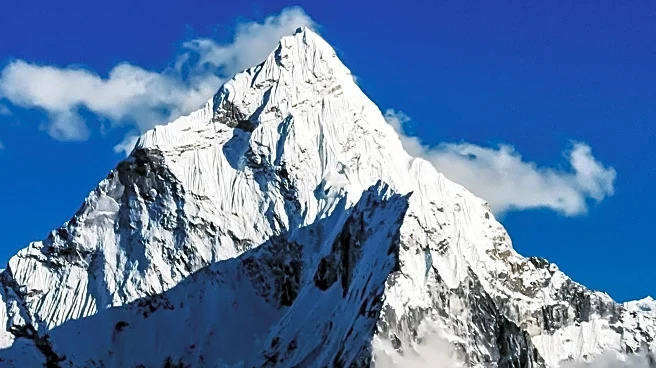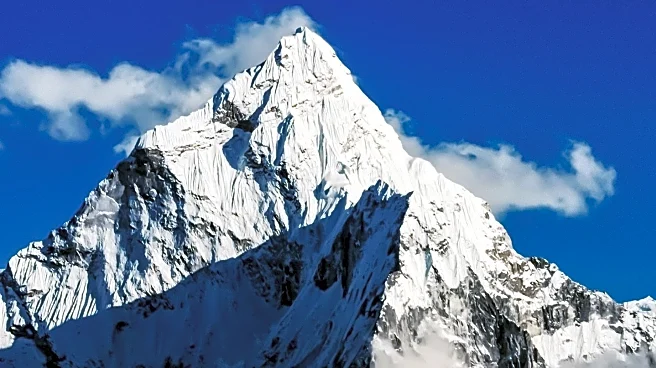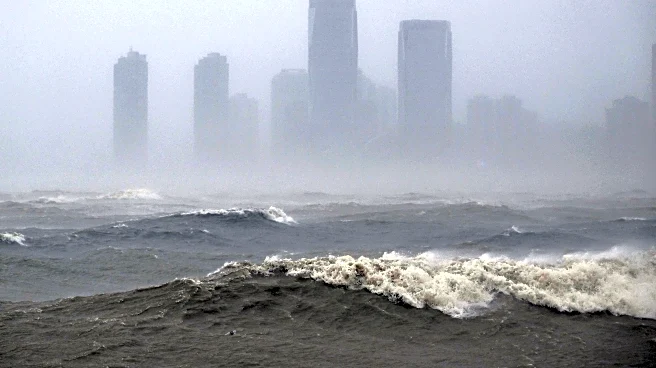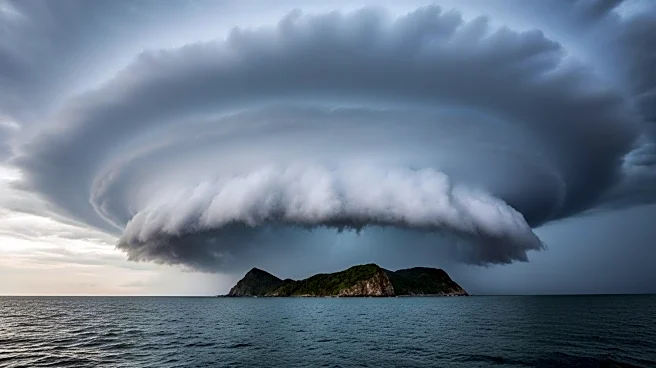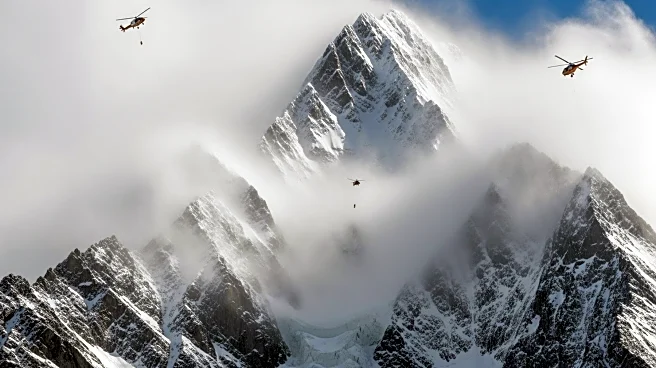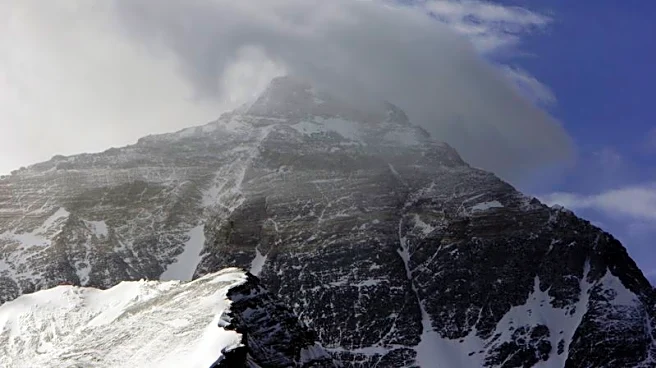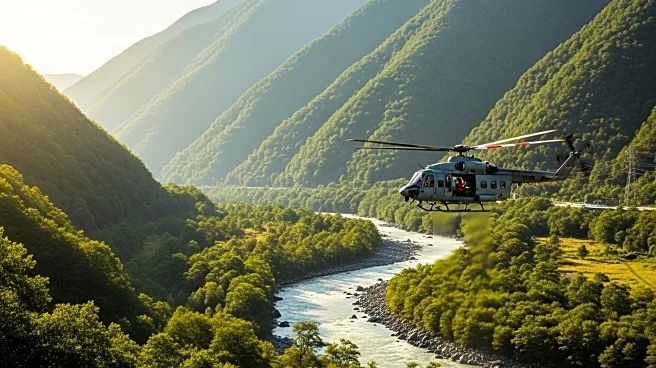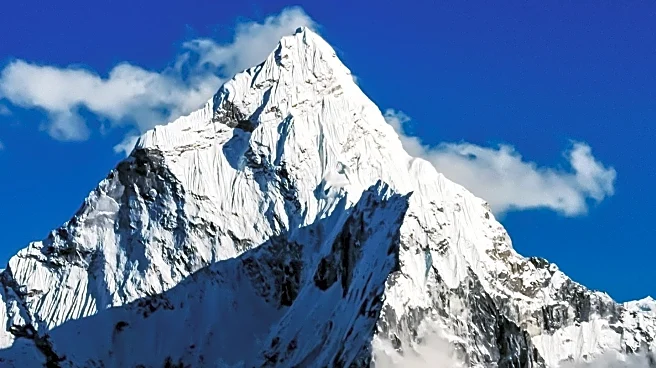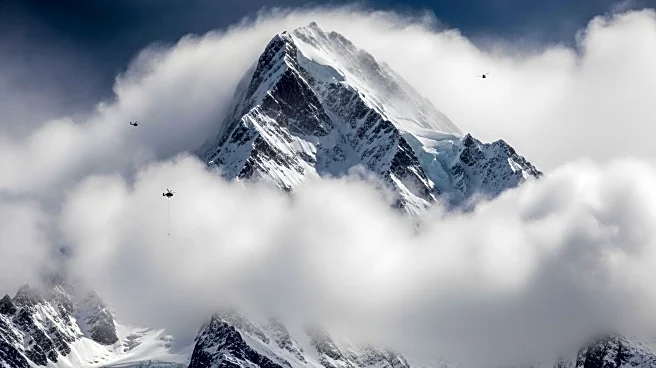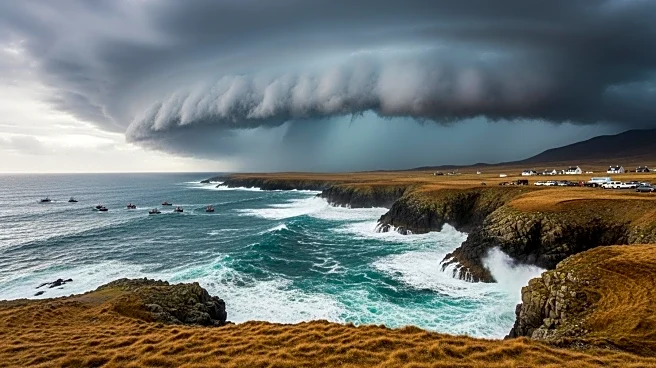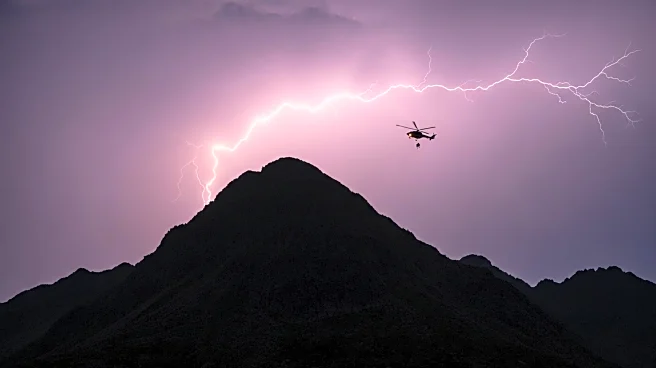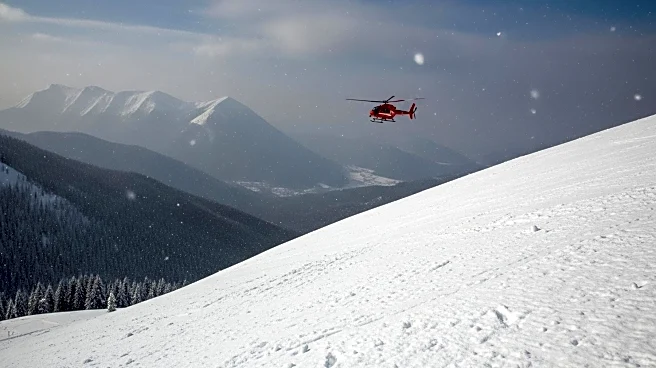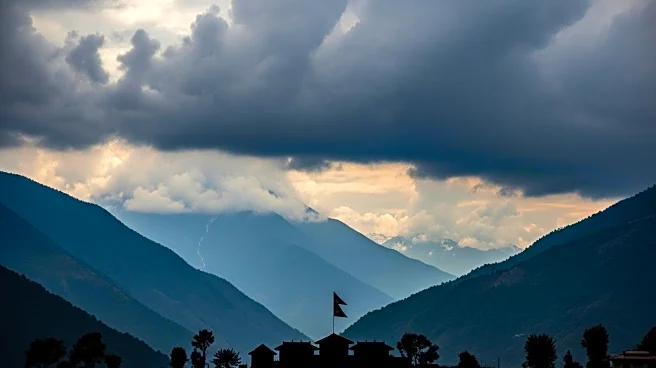What is the story about?
What's Happening?
A blizzard on the Tibetan side of Mount Everest has trapped nearly 1,000 people, blocking roads and access to campsites. Rescue teams and local villagers are working to clear snow and facilitate evacuations. The snowfall began on Friday and continued through Saturday, leading to the suspension of ticket sales and entry to the Everest Scenic Area. Meanwhile, across the border in Nepal, heavy rains have caused landslides and flash floods, resulting in at least 47 deaths.
Why It's Important?
The blizzard on Mount Everest highlights the challenges of extreme weather in high-altitude regions, affecting tourism and local economies. The situation underscores the importance of preparedness and response strategies for natural disasters in remote areas. The simultaneous weather events in Nepal and Tibet illustrate the broader impact of climate change on the Himalayan region, affecting both human safety and economic activities such as tourism.
What's Next?
Rescue operations will continue to focus on evacuating trapped individuals and clearing access routes. Authorities may review safety protocols for tourists and local communities in high-risk areas. The events may lead to increased collaboration between Nepal and China on disaster management and climate change adaptation strategies. Long-term efforts may include infrastructure improvements and enhanced weather monitoring systems.
Beyond the Headlines
The blizzard raises questions about the sustainability of tourism in vulnerable regions like Mount Everest. It also highlights the cultural and economic significance of the area, which attracts thousands of visitors annually. The event may prompt discussions on balancing tourism development with environmental conservation and disaster risk reduction.
AI Generated Content
Do you find this article useful?
